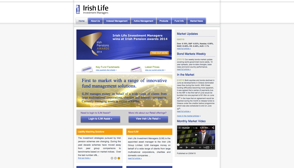Revised Statement of Recommended Practice (SORP)
Trustees should be aware of a new accounting standard, FRS 102, which is applicable to financial statements of pension schemes in the UK and the Republic of Ireland. FRS 102 applies to accounting periods commencing on or after 1 January 2015. The Statement of Recommended Practice (SORP) has been revised to take account of the new requirements of FRS 102. A brief summary of the key changes, applicable to defined contribution schemes, is set out below.
Trustees of schemes with less than 100 members (active and deferred) may elect to prepare an alternative annual report and such reports are not subject to the recommendations of the SORP.
Key changes
Annuities – FRS102 requires “buy-in” annuity policies to be valued and included in the scheme’s financial statements at fair value. Previously such annuities could be carried at nil value. Buy-in annuities are typically purchased in the name of the trustees, they remain assets of the scheme and do not legally discharge the trustees of the corresponding liabilities associated with the annuities. The fair value of an annuity is the present value of the related obligation. Trustees may adopt a reasonable basis for valuing annuities in order to mitigate the costs associated with valuation. The valuation must be carried out by a suitably qualified person, such as an actuary or the annuity provider.
Fair Value of Investments – Investments must now be disclosed in the financial statements at fair value, and analysed by reference to a fair value hierarchy:
Category (a) – the best evidence of fair value is a quoted price for an identical asset in an active market. Cash, ETFs and equities traded in an active market would typically be included under category (a).
Category (b) – when quoted prices are unavailable, the price of a recent transaction for an identical asset provides evidence of fair value, as long as there has not been a significant change in economic circumstances or a significant lapse of time since the transaction took place. Daily or weekly priced pooled funds would typically be included under category (b).
Category (c) – if the market for the asset is not active and recent transactions of an identical asset on their own are not a good estimate of fair value , an entity estimates the fair value by using a valuation technique. Unquoted equities, bonds and monthly or quarterly priced pooled funds would typically be included under category (c).
Investment Risk – Schemes must disclose information to enable users to evaluate the nature and extent of credit risk and market risk arising from financial instruments to which the scheme is exposed at the end of the reporting period.
- Credit risk is the risk that one party to a financial instrument will cause a financial loss for the other party by failing to discharge an obligation.
- Market risk is the risk that the fair value or future cash flows of a financial instrument will fluctuate because of changes in market prices. Market risk comprises of interest rate risk, currency risk and other price risk.
For each type of credit risk and market risk arising from financial instruments, the scheme should disclose;
- The exposure to the risk and how they arise
- Its objectives, policies and processes for managing the risk and the methods used to measure the risk
- Any changes in (a) or (b) since the previous period.
For more information contact your financial advisor or Registered Administrator.
Information correct as at March 2016








